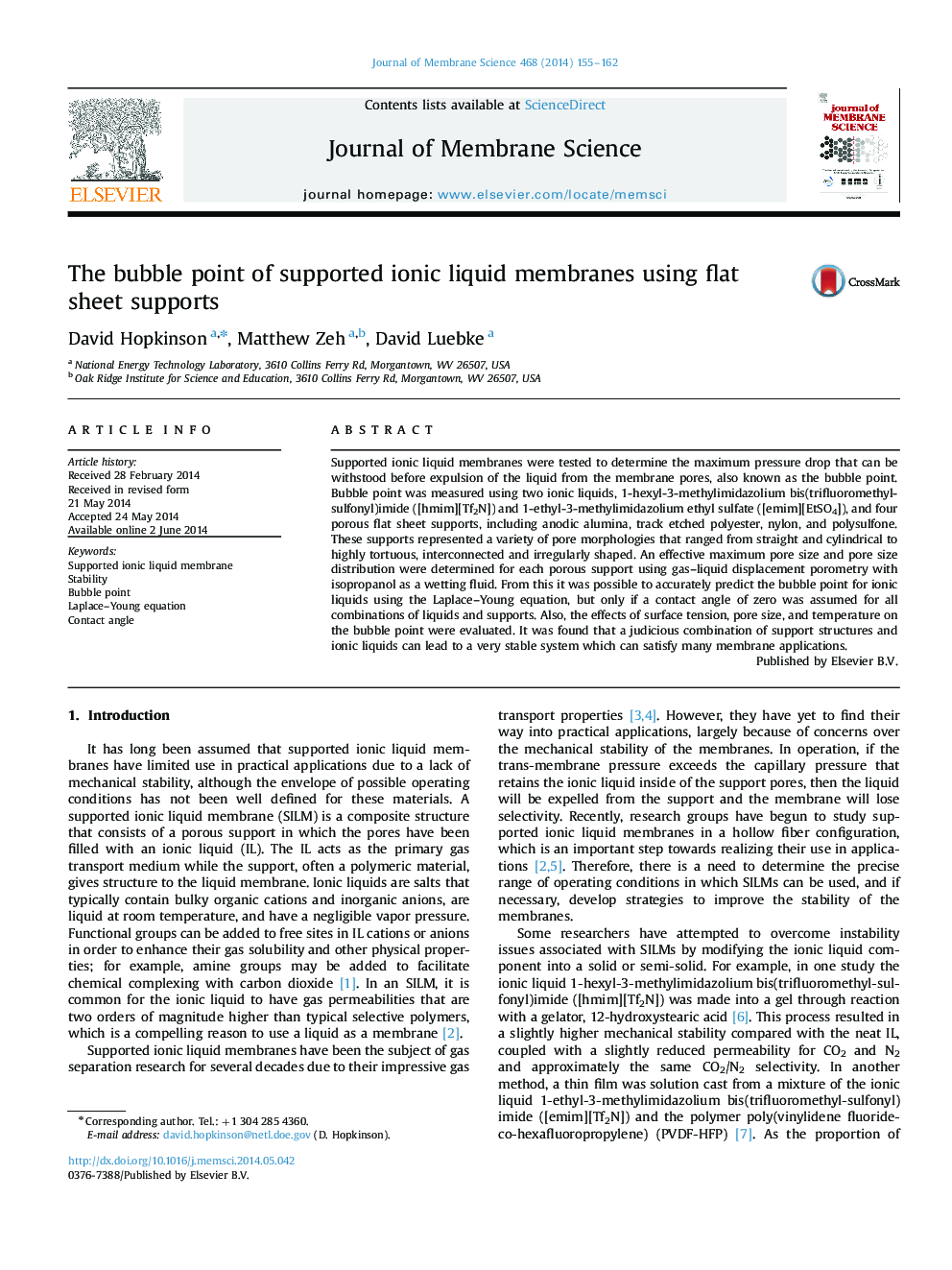| Article ID | Journal | Published Year | Pages | File Type |
|---|---|---|---|---|
| 633448 | Journal of Membrane Science | 2014 | 8 Pages |
•Maximum pressure drop (the bubble point) was evaluated for supported ionic liquid membranes.•Several ionic liquids and flat sheet supports representing a variety of properties were tested.•The influence of surface tension, pore size, contact angle, and temperature are reported.•The Laplace–Young equation only predicted bubble point accurately when a contact angle of zero was used.
Supported ionic liquid membranes were tested to determine the maximum pressure drop that can be withstood before expulsion of the liquid from the membrane pores, also known as the bubble point. Bubble point was measured using two ionic liquids, 1-hexyl-3-methylimidazolium bis(trifluoromethyl-sulfonyl)imide ([hmim][Tf2N]) and 1-ethyl-3-methylimidazolium ethyl sulfate ([emim][EtSO4]), and four porous flat sheet supports, including anodic alumina, track etched polyester, nylon, and polysulfone. These supports represented a variety of pore morphologies that ranged from straight and cylindrical to highly tortuous, interconnected and irregularly shaped. An effective maximum pore size and pore size distribution were determined for each porous support using gas–liquid displacement porometry with isopropanol as a wetting fluid. From this it was possible to accurately predict the bubble point for ionic liquids using the Laplace–Young equation, but only if a contact angle of zero was assumed for all combinations of liquids and supports. Also, the effects of surface tension, pore size, and temperature on the bubble point were evaluated. It was found that a judicious combination of support structures and ionic liquids can lead to a very stable system which can satisfy many membrane applications.
